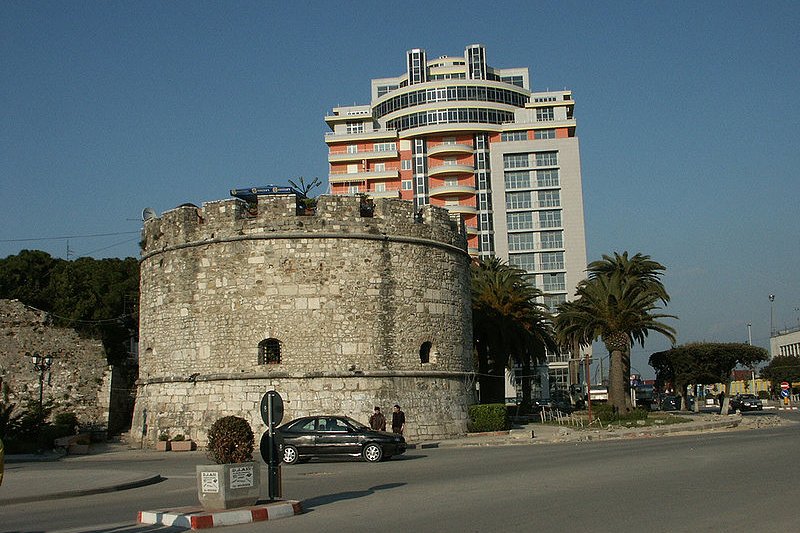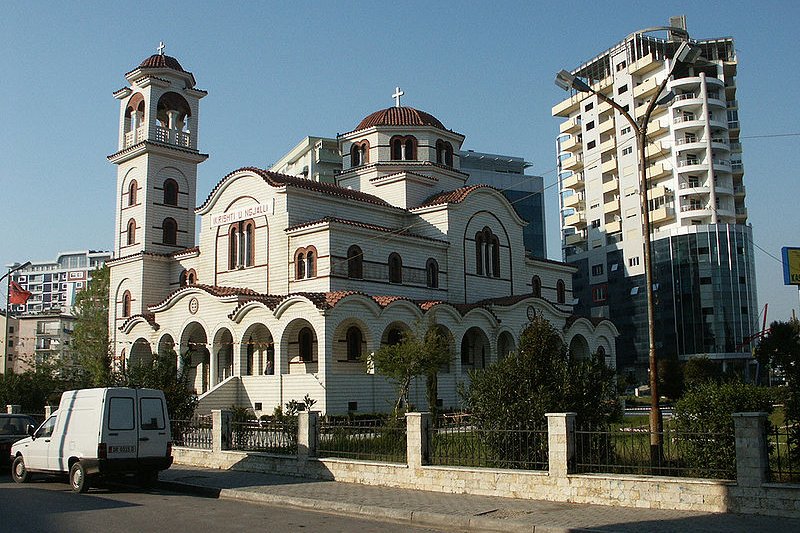 Durrës, Albania
Durrës, AlbaniaSource: https://commons.wikimedia.org/wiki/File:Durr%C3%ABs_Albania_2.jpg
Author: a.dombrowski

Durrës is the second largest city in Albania. Located on the coast facing the Adriatic Sea, it is a major port city for the country. Durrës has a population of 204,000 (2011 estimate). It observes the Central European Time, which is an hour ahead of Coordinated Universal Time (UTC+1), and two hours ahead during Daylight Saving Time in summer.
Durrës experiences a Mediterranean climate. The warmest months are July and August, when the average high temperature rise to 30°C (86°F). Coldest month is January, when the average low temperature drops to 4°C (39°F). November is the wettest month, with 146 mm (5.75 in) of precipiration, followed by December, with 140 mm (5.51 in) of precipitation.
 City wall, Durrës
City wall, DurrësSource: https://commons.wikimedia.org/wiki/File:Durr%C3%ABs_Albania_5.jpg
Author: kopaszsop

The city of Durrës has a history going back to Greek and Roman times, when it was known as Epidamnus and Dyrrhachion respectively. Founded around 627 BC, it is one of the oldest cities in Europe. The city passed from Greek to Roman rule following the Illyrian Wars in 229 BC. The city was later conquered by the Ostrogoths in AD 481, and was menaced for centuries by attacks from Bulgarians.
With the collapse of the Western Roman Empire, Durrës continued under the Byzantine Empire. The city remained under Byzantine control until the late 10th century, when it was conquered by Samuel of Bulgaria. Since then, rule over Durrës has switched between the Byzantine and other rulers. In 1205, rule over Durrës was transferred to the Republic of Venice, as the Duchy of Durazzo.
Durrës fell under Ottoman forces in 1501. Under Turkish rule, most of its people converted to Islam. The city was also renamed Diraç. However, during Turkish rule, it began to decline. By the mid 19th century, it only had about a thousand inhabitants.
 An Orthodox church in Durrës
An Orthodox church in DurrësSource: https://commons.wikimedia.org/wiki/File:Durr%C3%ABs_Albania_6.jpg
Author: kopaszsop
 Durrës was active in the Albanian national liberation movement in the late 19th and early 20th centuries. During the First World War, it was occupied first by Italy in 1915, then by Austria-Hungary in 1916-18, and then by the Allies in October 1918. During the Second World War, it was annexed as part of the Kingdom of Italy until 1943, and then by Nazi Germany until 1944. After the war, the city was ruled by the Communist regime until the collapse of Communist rule in 1990.
Durrës was active in the Albanian national liberation movement in the late 19th and early 20th centuries. During the First World War, it was occupied first by Italy in 1915, then by Austria-Hungary in 1916-18, and then by the Allies in October 1918. During the Second World War, it was annexed as part of the Kingdom of Italy until 1943, and then by Nazi Germany until 1944. After the war, the city was ruled by the Communist regime until the collapse of Communist rule in 1990.
Visiting Durrës
You can reach Durrës by ferry from Bari, Ancona, Otranto and Trieste in Italy, and from Kotor in Montenegro.Places of Interest in Durrës
- Ancient City Walls of Durrës
- Durrës Amphitheater
- Durrës Archaeological Museum
- King Zog's Villa
 Latest updates on Penang Travel Tips
Latest updates on Penang Travel Tips

Copyright © 2003-2025 Timothy Tye. All Rights Reserved.

 Go Back
Go Back